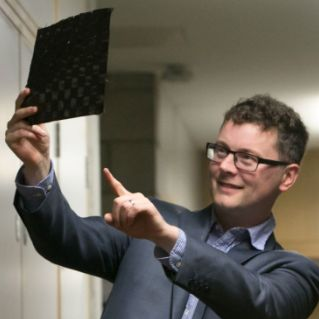Polymers in Biomedical Engineering
A special issue of Polymers (ISSN 2073-4360). This special issue belongs to the section "Polymer Applications".
Deadline for manuscript submissions: closed (31 October 2020) | Viewed by 45700
Special Issue Editors
Interests: structure/property relationships in polymers; biopolymers; biomedical polymers; tissue engineering; polymer composites; polymer processing; hydrogels
Special Issues, Collections and Topics in MDPI journals
Interests: bio-polymers; conductive polymers; lignin, hydrogels; encapsulation and thermoelectricity
Special Issues, Collections and Topics in MDPI journals
Special Issue Information
Dear Colleges,
Polymers are considered key materials for medical applications due to their advantageous multifunctional chemical structures; mechanical properties; biocompatibility; and ease of chemical modification, which offers the possibility of micro and nanostructure tunability. Applications such as drug delivery, cancer therapy, scaffolds for tissue regeneration, and polymers in implants have demonstrated the enormous potential of these materials in the biomedical engineering field. Therefore, this Special Issue is launched in order to cover new aspects of both synthetic and biopolymers within the biomedical engineering field. We bring together a number of original papers and reviews covering but not restricted to the following topics:
- Polymers for drug delivery (nanoparticles and excipients);
- Polymer scaffolds for tissue engineering;
- Polymers for cancer therapy;
- Polymers in orthopaedic implants (for, e.g., UHMWPEs);
- 3D printed polymeric constructs for medical applications.
Dr. Maurice N. Collins
Dr. Mario Culebras Rubio
Guest Editors
Manuscript Submission Information
Manuscripts should be submitted online at www.mdpi.com by registering and logging in to this website. Once you are registered, click here to go to the submission form. Manuscripts can be submitted until the deadline. All submissions that pass pre-check are peer-reviewed. Accepted papers will be published continuously in the journal (as soon as accepted) and will be listed together on the special issue website. Research articles, review articles as well as short communications are invited. For planned papers, a title and short abstract (about 100 words) can be sent to the Editorial Office for announcement on this website.
Submitted manuscripts should not have been published previously, nor be under consideration for publication elsewhere (except conference proceedings papers). All manuscripts are thoroughly refereed through a single-blind peer-review process. A guide for authors and other relevant information for submission of manuscripts is available on the Instructions for Authors page. Polymers is an international peer-reviewed open access semimonthly journal published by MDPI.
Please visit the Instructions for Authors page before submitting a manuscript. The Article Processing Charge (APC) for publication in this open access journal is 2700 CHF (Swiss Francs). Submitted papers should be well formatted and use good English. Authors may use MDPI's English editing service prior to publication or during author revisions.
Keywords
- Polymers for drug delivery (nanoparticles and excipients)
- Polymer scaffolds for tissue engineering
- Polymers for cancer therapy
- Polymers in orthopaedic implants (for, e.g., UHMWPEs)
- 3D printed polymeric constructs for medical applications.
Related Special Issue
- Polymers in Tissue Engineering in Polymers (46 articles)







